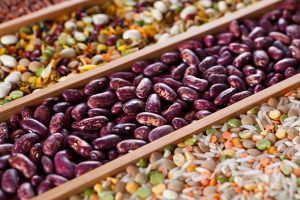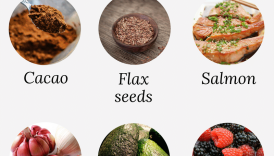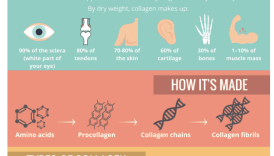The Bean Diet of Blue Zone Inhabitants: A Key to Longevity?

Introduction to Blue Zones and Longevity
What are Blue Zones?
Blue Zones are regions of the world where people not only live longer but also enjoy healthier lives. These unique areas, identified by Dan Buettner and his team, include Sardinia (Italy), Ikaria (Greece), Nicoya Peninsula (Costa Rica), Okinawa (Japan), and Loma Linda (California). These zones are characterized by high concentrations of centenarians, individuals who live to be 100 years or older. So, what’s the secret behind these extraordinary lifespans? Well, it’s a blend of genetics, lifestyle, and environment. Each Blue Zone has its own cultural practices, but they all share some remarkable similarities that promote a longer, healthier life.
- The Bean Diet of Blue Zone Inhabitants: A Key to Longevity?
- Introduction to Blue Zones and Longevity
- What are Blue Zones?
- Factors contributing to longevity in Blue Zones
- The Bean Diet in Blue Zone Regions
- Overview of the traditional bean-based diet
- Nutritional benefits of beans in promoting longevity
- Blue Zone Inhabitants and Their Health
- Health statistics of Blue Zone populations
- Impact of diet on health outcomes in Blue Zone inhabitants
- Types of Beans Consumed in Blue Zones
- Common varieties of beans used in Blue Zone diets
- Preparation methods of beans in traditional Blue Zone dishes
- Scientific Studies on the Bean Diet in Blue Zones
- Research on the health benefits of a bean-based diet
- Comparison of health outcomes between Blue Zone inhabitants and other populations
Factors contributing to longevity in Blue Zones
Several key factors have been identified that contribute to the longevity of Blue Zone populations:
- Balanced Diet: Residents emphasize plant-based eating habits, with a strong focus on whole foods, especially beans, vegetables, and entire grains.
- Sociability: Strong social networks are vital. People in Blue Zones tend to maintain close family ties and friendships, creating a supportive community.
- Regular Physical Activity: Instead of structured workouts, inhabitants naturally integrate movement into their daily lives through activities like walking, gardening, or manual work.
- Sense of Purpose: Many individuals have a clear sense of purpose, often referred to as “Ikigai” in Japan, which contributes positively to mental and emotional well-being.
- Stress Reduction: Practices such as meditation or taking time to unwind with family and friends are commonplace, allowing for relaxation and mental clarity.
As we explore the significance of diet in the lives of Blue Zone inhabitants, particularly the role of beans in their culinary traditions, it becomes clear that these dietary choices are integral not just for longevity, but also for maintaining a high quality of life.
The Bean Diet in Blue Zone Regions
Overview of the traditional bean-based diet
Transitioning from the essential lifestyle factors contributing to longevity, we come to one of the most fascinating aspects of Blue Zone diets: beans. Inhabitants of these regions often consume a diet rich in legumes, particularly beans. You’ll find beans as a staple ingredient in dishes across all Blue Zones, where they’re celebrated not just for their taste, but for their health benefits. In these diverse cultures, beans are typically prepared in various ways, integrated into both everyday meals and special occasions. For instance:
- In Sardinia, you might encounter fava beans paired with local vegetables.
- In Ikaria, lentil salads are a popular choice, brimming with flavors from fresh ingredients.
- In Costa Rica’s Nicoya Peninsula, black beans often serve as the foundation of many traditional meals.
This versatility not only enhances the palate but ensures that beans remain a primary source of nutrition.
Nutritional benefits of beans in promoting longevity
The popularity of beans in Blue Zone diets isn’t just about local flavor—it’s backed by impressive nutritional benefits that support longevity. Here are some micronutrients and health advantages beans offer:
- High fiber content: Beans are packed with dietary fiber, which helps lower cholesterol levels and regulate blood sugar. This can prevent diseases such as diabetes and heart disease.
- Rich in protein: These legumes provide a great plant-based protein source, essential for muscle maintenance, especially as one ages.
- Vitamins and minerals: Beans are a great source of essential nutrients like folate, iron, magnesium, and potassium, which play significant roles in overall body function and health.
- Antioxidants: Many beans contain antioxidants that combat oxidative stress in the body, which is linked to aging and various chronic diseases.
With all these benefits, it’s easy to see why beans are a cornerstone of the diets in Blue Zones. They don’t just add nutrition; they strengthen community ties, as families often come together to cook and share meals packed with these healthy legumes. As we delve deeper into the specific types of beans consumed in these areas, it becomes even clearer how integral they are to the regions’ culinary heritage and health practices.
Blue Zone Inhabitants and Their Health
Health statistics of Blue Zone populations
Building on the integral role of beans in promoting longevity, let’s take a closer look at the health statistics of Blue Zone populations. Research shows that these regions enjoy remarkable longevity and lower rates of chronic diseases when compared to the global average. Some compelling statistics include:
- Life Expectancy: In many Blue Zones, such as Okinawa and Sardinia, life expectancy often surpasses 90 years.
- Chronic Disease Rates: The rate of heart disease in Blue Zone areas can be as much as 80% lower than in the United States. For instance, individuals in Ikaria experience one of the lowest rates of dementia worldwide.
- Centenarians: There are 68 centenarians for every 100,000 people in Sardinia, which is incredibly high compared to the global average of 7.
These figures reflect a remarkable connection between lifestyle choices and health outcomes, with diet playing a pivotal role.
Impact of diet on health outcomes in Blue Zone inhabitants
The dietary habits embraced by Blue Zone inhabitants have a significant impact on their health outcomes. Here’s how their nutrition helps maintain excellent health:
- Reduced Inflammation: The high intake of plant-based foods, including beans, helps lower inflammation, a key factor in many chronic conditions.
- Enhanced Immunity: Nutrient-rich diets contribute to robust immune systems, which are crucial for preventing illnesses.
- Weight Management: The fiber-dense characteristics of beans and other whole foods help in maintaining a healthy weight and can prevent obesity-related diseases.
For example, those living in the Nicoya Peninsula often cite their traditional meals—many featuring beans and vegetables—as central to feeling energetic and healthy well into their later years. The focus on natural foods, low in processed sugars, significantly contributes to their overall wellness. It’s fascinating to see how diet, along with other lifestyle factors like strong community ties and regular movement, shapes the health and longevity of Blue Zone inhabitants. As we move forward, we’ll explore the specific types of beans consumed in these regions and how they fit into the cultural fabric of Blue Zone diets.
Types of Beans Consumed in Blue Zones
Common varieties of beans used in Blue Zone diets
As we delve deeper into the dietary habits of Blue Zone inhabitants, it’s essential to highlight the specific types of beans that play a central role in their meals. Each Blue Zone has its distinct varieties, often based on local agriculture and culinary traditions. Here are some common beans you might find:
- Black Beans: Predominantly consumed in the Nicoya Peninsula, these beans are rich in protein and fiber, and they serve as a staple in many traditional dishes.
- Fava Beans: Popular in Sardinia, fava beans are celebrated for their creamy texture and nutty flavor, often included in soups and salads.
- Lentils: In Ikaria, lentils are highly favored, contributing to hearty stews and salads that sustain the locals through their active lifestyles.
- Adzuki Beans: These small red beans are common in Okinawa, often found in desserts or served in savory dishes.
These beans are not only nutrient-dense but also versatile, allowing for a wide range of culinary creations.
Preparation methods of beans in traditional Blue Zone dishes
The unique preparation methods of beans in Blue Zone cuisines contribute to their flavor and nutritional richness. The art of cooking with beans is often steeped in tradition, reflecting the region’s culture. Here’s how these beloved legumes are typically prepared:
- Soaking: Most beans are soaked overnight to improve digestion and reduce cooking time. This practice is common in many cultures and enhances the flavor.
- Stewing: In many Blue Zone regions, beans are slow-cooked with vegetables, herbs, and spices to create nutritious stews that absorb all the flavors beautifully.
- Salads: Fresh salads featuring beans, such as Ikaria’s lentil salad, often combine beans with seasonal vegetables, olive oil, and vinegar, serving as a refreshing accompaniment to meals.
- Mashed or Pureed: In Sardinia, fava beans are often mashed and served as spreads or dips, making for a nutritious appetizer or side dish.
This culinary richness speaks volumes about the role of beans in fostering community and tradition. Meals are often enjoyed together, creating bonds while indulging in delicious, health-promoting foods. As we can see, beans are not just a dietary staple; they encapsulate the essence of Blue Zone living. Next, we’ll look at scientific studies backing the health benefits of this bean-based diet in Blue Zone regions.
Scientific Studies on the Bean Diet in Blue Zones
Research on the health benefits of a bean-based diet
Diving into the scientific realm, numerous studies have highlighted the compelling health benefits associated with a bean-based diet prominent in Blue Zones. Research consistently supports the idea that these legumes provide a multitude of advantages contributing to longevity and overall health. For instance, a study published in the American Journal of Clinical Nutrition found that diets high in legumes, including beans, are associated with lower rates of heart disease and type 2 diabetes. Some notable findings include:
- Reduced Cholesterol Levels: Regular consumption of beans has been linked to improved cholesterol profiles, diminishing the risk of cardiovascular issues.
- Blood Sugar Regulation: Beans can enhance glycemic control, helping to manage blood sugar levels and potentially reducing the risk of diabetes.
- Enhanced Gut Health: The high fiber content in beans promotes a healthy gut microbiome, which is essential for digestion and overall well-being.
In Blue Zones, where beans constitute a major part of the diet, these health benefits become apparent through the remarkable well-being of their inhabitants.
Comparison of health outcomes between Blue Zone inhabitants and other populations
To truly appreciate the impact of a bean-centric diet, it helps to compare health outcomes between Blue Zone populations and other global communities. Research illustrates stark differences in health metrics that can be attributed, in part, to dietary choices.
- Longevity: As previously mentioned, Blue Zone inhabitants often live significantly longer than people in other regions. For example, Sardinians have a notably higher percentage of centenarians than the global average.
- Chronic Diseases: The prevalence of conditions like obesity, heart disease, and diabetes is much lower in Blue Zones. A comprehensive study from The Lancet indicated that people in these areas are 30% less likely to suffer from chronic diseases compared to the general population in high-income countries.
- Quality of Life: Many inhabitants report high quality of life well into their golden years, emphasizing physical activity, mental clarity, and active participation in their communities.
It’s evident that the bean-based diet, rich in nutrients and fiber, alongside other lifestyle choices, plays a significant role in fostering these positive health outcomes. The exploratory journey into the connection between diet and longevity highlights that a simple ingredient like beans can be a powerful ally in the quest for better health. As we wrap up our exploration, it becomes clear that adopting such dietary principles could benefit individuals globally.





